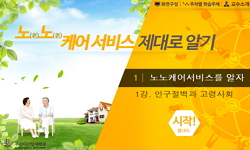This study examines the marital and regional differences in factors associated with the aged Koreans' living patterns separate from their adult children. A probability sample with 1,533 Koreans aged 60 years and older conducted by the Korea Ministry o...
http://chineseinput.net/에서 pinyin(병음)방식으로 중국어를 변환할 수 있습니다.
변환된 중국어를 복사하여 사용하시면 됩니다.
- 中文 을 입력하시려면 zhongwen을 입력하시고 space를누르시면됩니다.
- 北京 을 입력하시려면 beijing을 입력하시고 space를 누르시면 됩니다.
Factors Influencing Independent Living Arrangements Among the Elderly In Korea : (Marital and Regional Differences)
한글로보기https://www.riss.kr/link?id=E807172
- 저자
- 발행기관
-
발행연도
1999년
-
작성언어
English
- 주제어
-
KDC
338.000
-
자료형태
한국연구재단(NRF)
-
수록면
2-8
-
0
상세조회 -
0
다운로드
부가정보
다국어 초록 (Multilingual Abstract)
This study examines the marital and regional differences in factors associated with the aged Koreans' living patterns separate from their adult children. A probability sample with 1,533 Koreans aged 60 years and older conducted by the Korea Ministry of Health and Social Welfare in 1994 is analyzed for this study. Study results show significant marital and regional differences. For the widows, regardless of their residential areas, number of children is an influential factor determining independent living arrangements but no common factor is found for the married. There is a great discrepancy between the urban married and rural married. Only income is significant for the urban married but not for the rural married. Factors such as education, age, and number of children are significantly related to the living arrangements for the rural married. For the rural aged, regardless of their marital status, age and number of children are related to the separate living arrangements but income is significant for the aged living in urban areas. These findings indicate that economic factor is more important than demographic factors for the urban elderly but the reverse was true for the rural elderly. The concept of aged diversity is suggested for the future research on the Korean elderly.
목차 (Table of Contents)
- INTRODUCTION
- METHODS
- Study sample
- Measures
- Analysis
- INTRODUCTION
- METHODS
- Study sample
- Measures
- Analysis
- RESULTS
- General characteristics of the Sample
- Factors Influencing Independent Living Arrangements Among the Korean Elderly
- SUMMARY AND DISCUSSION
- REFERENCES











